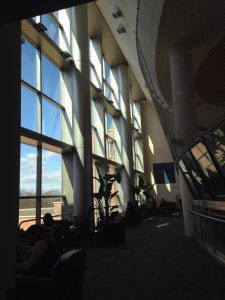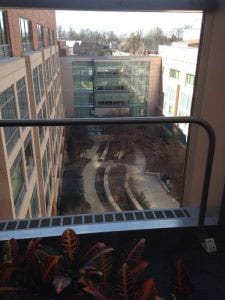
I woke up bright and early last Monday in Bethesda, Maryland. As soon as my eyes were open I was excited…I’d be spending Rare Disease Day at NIH.
I found time during lunch to join a tour of NIH, an institution of hope for so many and had the privilege of listening to some amazing speakers. Organizations like Global Genes and NORD were present, as well the FDA and even a few members of congress. In the audience were advocacy groups, research groups and patients and parents alike.
Here are some of the highlights
The theme this year was “Patient Voices”
As said by Francis S. Collins, the director of the NIH;
“The patient voice isn’t passive. It’s active, it’s tenacious. Patient voices bring together patients and provides with a shared vision.”
Monday, as you probably know, was leap day.
Christopher E. Austin drew a poignant parallel between leap day and rare disease. He stated that leap day is special because it’s rare, rare disease patients are special too. His main point in his presentation was that things need to be done in a fundamentally different way in the way that rare disease research and treatment are approached. The end goal should be to develop treatments for every rare disease not in 2,000 years, not in 200, but in 20. He argued that the process could be sped up if we pay more attention to the way things interconnect….essentially a reorganization of science to draw connections as we learn about various genes and pathways.
He also advocated for the involvement of patients as early on as possible in the process of conducting research and developing treatments. In this way he stated the industry needed both logistical and cultural changes.
This reorganization, in his words, should allow the process to be
“a team sport, collaboration is key.”
Christopher Austin is asking for an increase in efficiency by 100 fold on the grounds that it is morally imperative for there to be treatments for everyone with a rare disease.
Petra Kaufmann, clinical innovation director for NCATS, for one, is optimistic as well. She has three reasons for being positive about the development of these treatments.
- Advances in science resulting in unprecedented understanding
- New ways of engaging patients as active partners
- Advancements in data technologies.
William A. Ghal presented on behalf of the Undiagnosed Disease Network International
Something that was brought up by various speakers during Rare Disease Day was the need for Natural Histories.

Because rare disease are often lacking in research the way they naturally progress and the long term effects are typically not well understood. That is were natural history studies would come in. Researchers need documentation of the natural course of disease in order to better understand and eventually treat them. Without these measures it is difficult to set end-goals for treatment with accurate benefit-risk assessment and parameters for clinical trials.
Gayarti Rao discussed the Orphan Drug Designation Program and also explained how groups can apply for a grant to conduct their own natural history research through the FDA’s OOPD’s Orphan Products Natural History Grants Program(www.fda.gov./orphan). The fund is about 2 million dollars to be awarded in 2 to 4 grants in 2017 and Patient Advocacy groups are eligible to apply.






